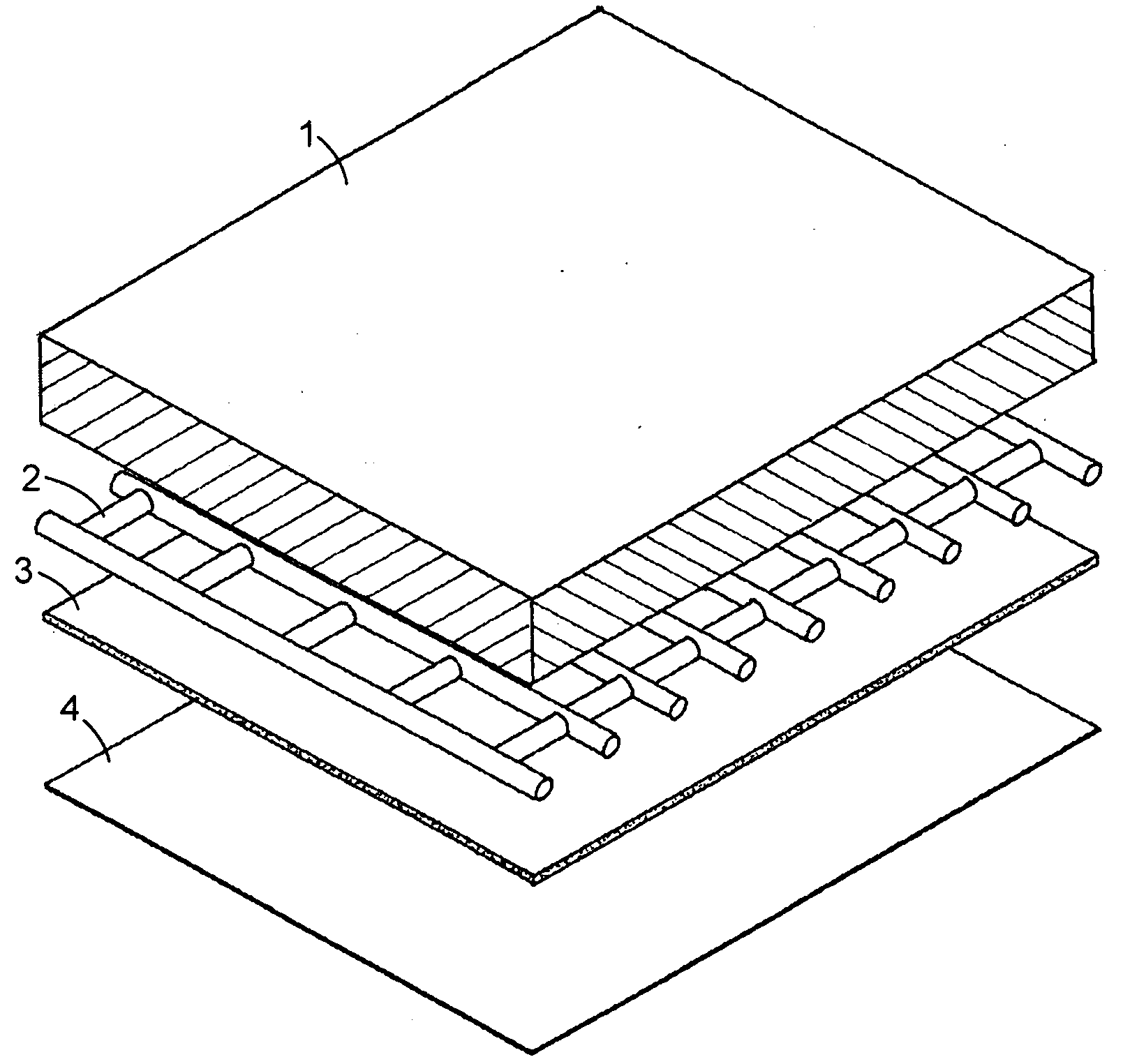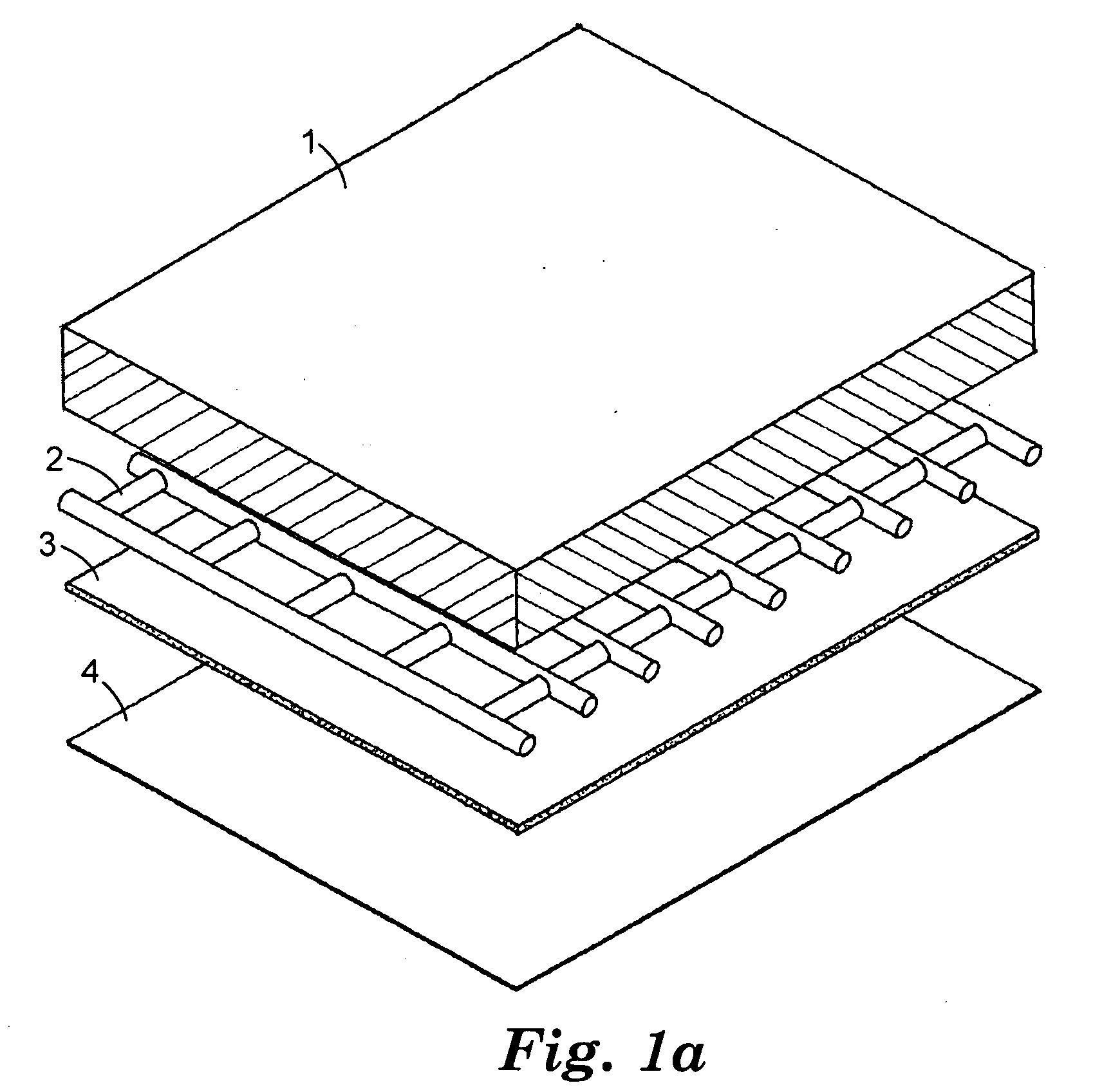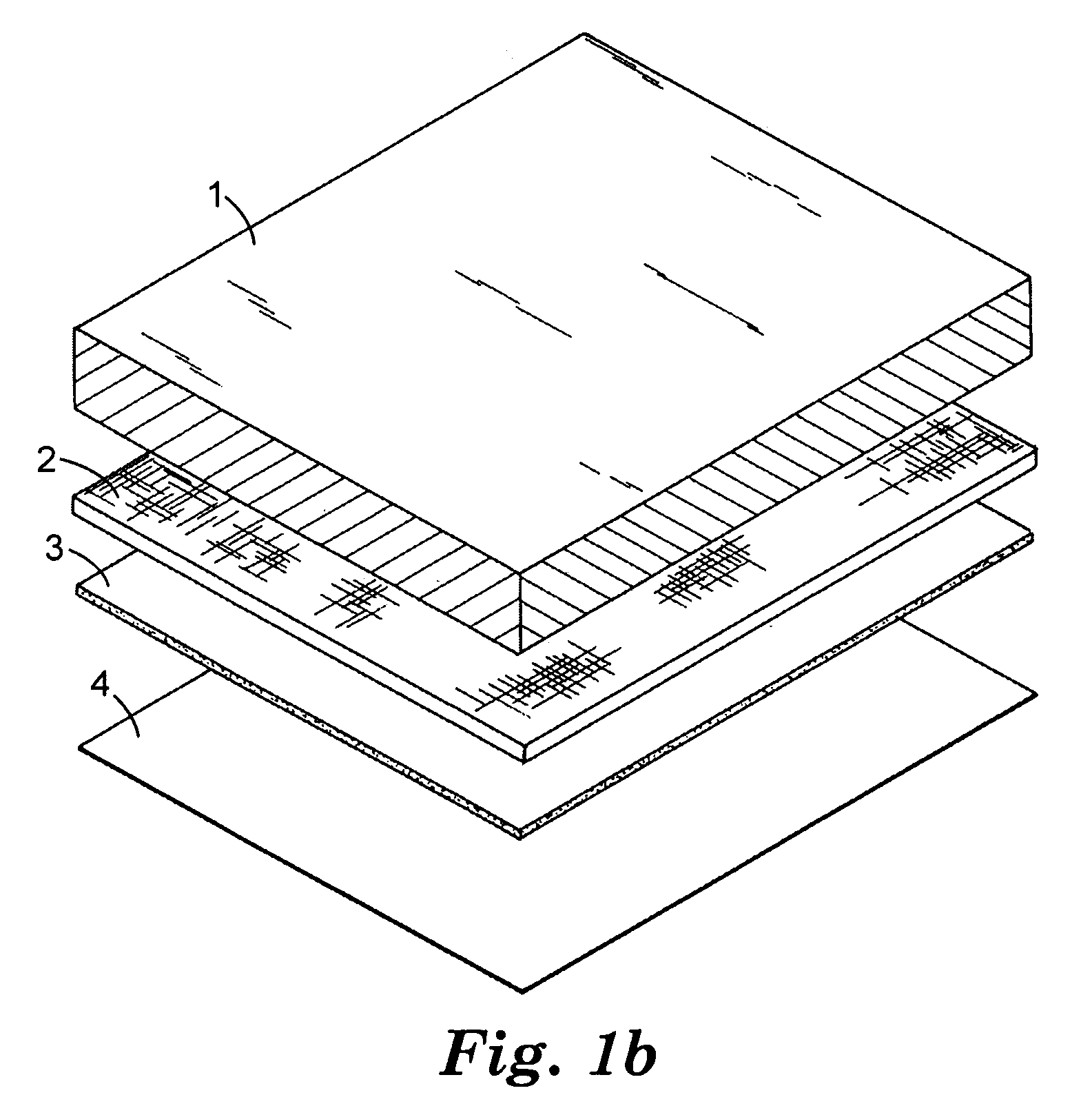Multi-layer intumescent fire protection barrier with adhesive surface
a fire protection barrier and adhesive surface technology, applied in fire protection, transportation and packaging, paper/cardboard containers, etc., can solve the problems of reducing the safety of workers, and reducing the installation time. , the effect of reducing the likelihood of premature detachmen
- Summary
- Abstract
- Description
- Claims
- Application Information
AI Technical Summary
Benefits of technology
Problems solved by technology
Method used
Image
Examples
example 1
[0050]An intumescent material was prepared using commercially available components. The intumescent material included the components listed in Table 1.
TABLE 1Composition of intumescent materialMaterialSupplierwt %Water15-25AmmoniumClariant (Frankfurt, Germany)15-30polyphosphateMelamineDSM (Sittard, The Netherlands) 5-15PentaerythritolPerstorp (Toledo, USA) 5-15Latex binderAir Products (Utrecht, The Netherlands)15-25Other additives10-20
[0051]A layer of a non-woven polyester veil (Optimat™, Technical Fibre Products, Newburg, N.Y.) having a weight of 7 g / m2 and a thickness of 0.06 mm was provided and the intumescent material was applied uniformly thereto. The intumescent material was then dried at a temperature of 20° C. for 24 hours, followed by drying at 70° C. for another 8 hours. The dried composite was then laminated with a 3M 200 MP™ adhesive film (3M, St. Paul, Minn.) having a thickness of 0.05 mm. A release liner was included with the adhesive layer as obtained from the supplie...
example 2
[0057]A fire protection barrier according to the present invention was prepared in accordance with Example 1. A length of hollow section steel (HSS) column having a rectangular cross section with nominal dimensions 3″×5″×⅜″ (7.6×12.7×0.95 cm) and length 4 ft (120 cm) was cleaned, but not sand blasted or primed; the omission of these surface preparation steps dramatically reduces overall application time. Between 3 and 4 layers of the barrier were wrapped around the column from a continuous tape roll. The thickness was measured in several locations and the average was calculated to be 2.54 mm. The DFT of intumescent material in the barrier was calculated to be 2.21 mm. The process took on the order of an hour.
[0058]A control HSS column of equivalent dimensions was prepared by sand blasting and priming. After the primer was allowed to dry, an intumescent coating having a composition as previously described with reference to Example 1 was applied using the conventional spray coating te...
PUM
| Property | Measurement | Unit |
|---|---|---|
| Temperature | aaaaa | aaaaa |
| Temperature | aaaaa | aaaaa |
| Thickness | aaaaa | aaaaa |
Abstract
Description
Claims
Application Information
 Login to View More
Login to View More - R&D
- Intellectual Property
- Life Sciences
- Materials
- Tech Scout
- Unparalleled Data Quality
- Higher Quality Content
- 60% Fewer Hallucinations
Browse by: Latest US Patents, China's latest patents, Technical Efficacy Thesaurus, Application Domain, Technology Topic, Popular Technical Reports.
© 2025 PatSnap. All rights reserved.Legal|Privacy policy|Modern Slavery Act Transparency Statement|Sitemap|About US| Contact US: help@patsnap.com



